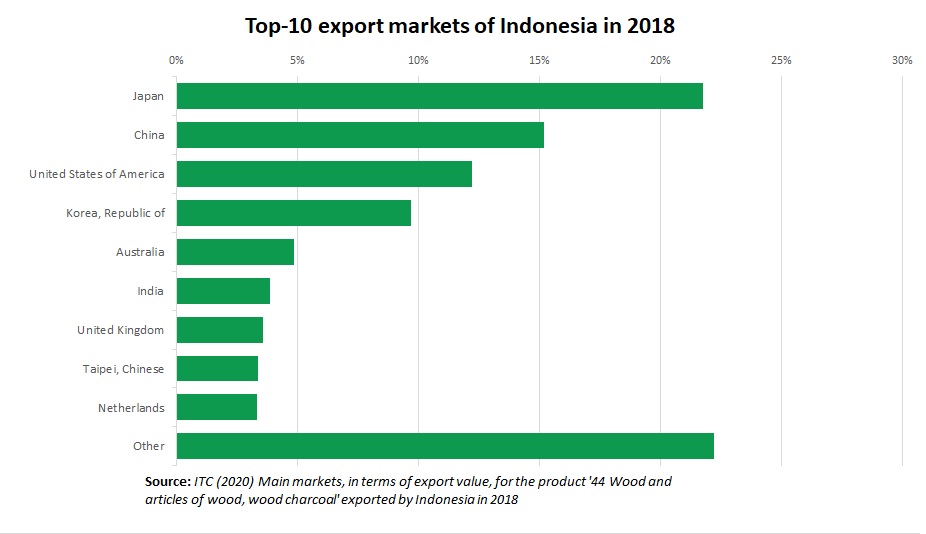Overview of timber sector of Indonesia
Supply chain actors
There are two distinct forms of forest resource management in Indonesia. These are the plantation industry, which up until recently was dominated by teak plantations in Java, and the selective forestry, located mostly on outer islands. Over the past two decades, plantation forestry for the pulp and paper industry has become a significant component of Indonesia’s forest industry. Pulpwood plantations are dominated by acacia and eucalyptus species, which grow quickly in Indonesia’s tropical climate.
Production and processing
Main harvested species
Commonly harvested species for the timber industry include:
- Meranti (Shorea spp.)
- Keruing (Dipterocarpus spp.)
- Kapur (Dryobalanops spp.)
- Mersawa (Anisoptera spp.)
- Teak (Tectona grandis) from plantations
According to ITTO (2019) the Indonesian industry produced in 2017 and 2018 about 73.8 million m3 of roundwood, which is almost entirely consumed within the country.
The high domestic consumption of logs in the table below is due to the use by domestic industries, in particular the pulp and paper industry and tertiary industries such as furniture production. With the exception of pulp and paper, timber industries have been on a decline since the late 90’s. Pulp and paper demand now makes up 50 per cent of the log output in Indonesia, which mainly originates from plantations.
Export
The export of primary timber products accounts for a total export value of 2,042 million US dollars in 2018, with plywood being the most important product (1,602 million US dollars) and to a lesser extent also sawn wood (347 million US dollars).
Indonesia is a net exporter of timber and timber products and although exports are going worldwide, the Far East contributes to the majority of the timber exports. Key exports include processed goods, namely: plywood, pulp and paper, mouldings and joinery, furniture, sawn timber and veneer. The graph below only covers the customs product code 44 Wood and articles of wood, wood charcoal. This contributes approximately to 40% of the country’s export of wood-based products, while pulp and paper products account for over 50% of Indonesia’s wood-based exports. This demonstrates the particular relevance of the pulp and paper industry for the Indonesian forest sector.

Data table
| Production (X 1000m3) |
Imports (X 1000m3) |
Domestic consumption (X 1000m3) |
Exports (X 1000m3) |
|
|---|---|---|---|---|
| logs | 75.097 | 1.178 | 76.248 | 27 |
| Sawnwood | 4.169 | 291 | 3.945 | 515 |
| Veneer | 774 | 13 | 701 | 85 |
| Plywood | 3.800 | 98 | 1.342 | 2.556 |
ITTO (2019), data 2017


